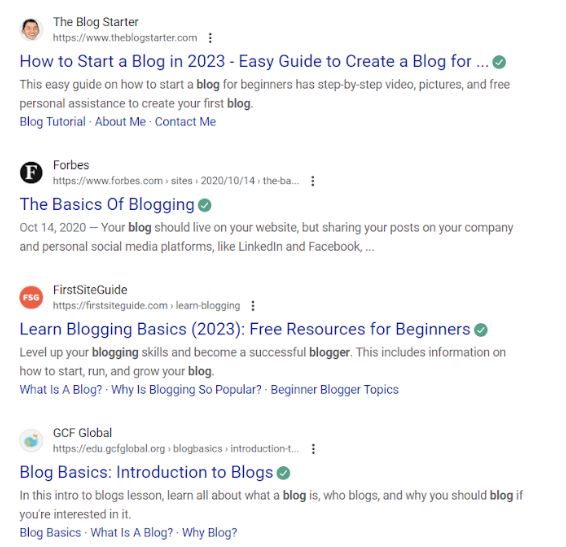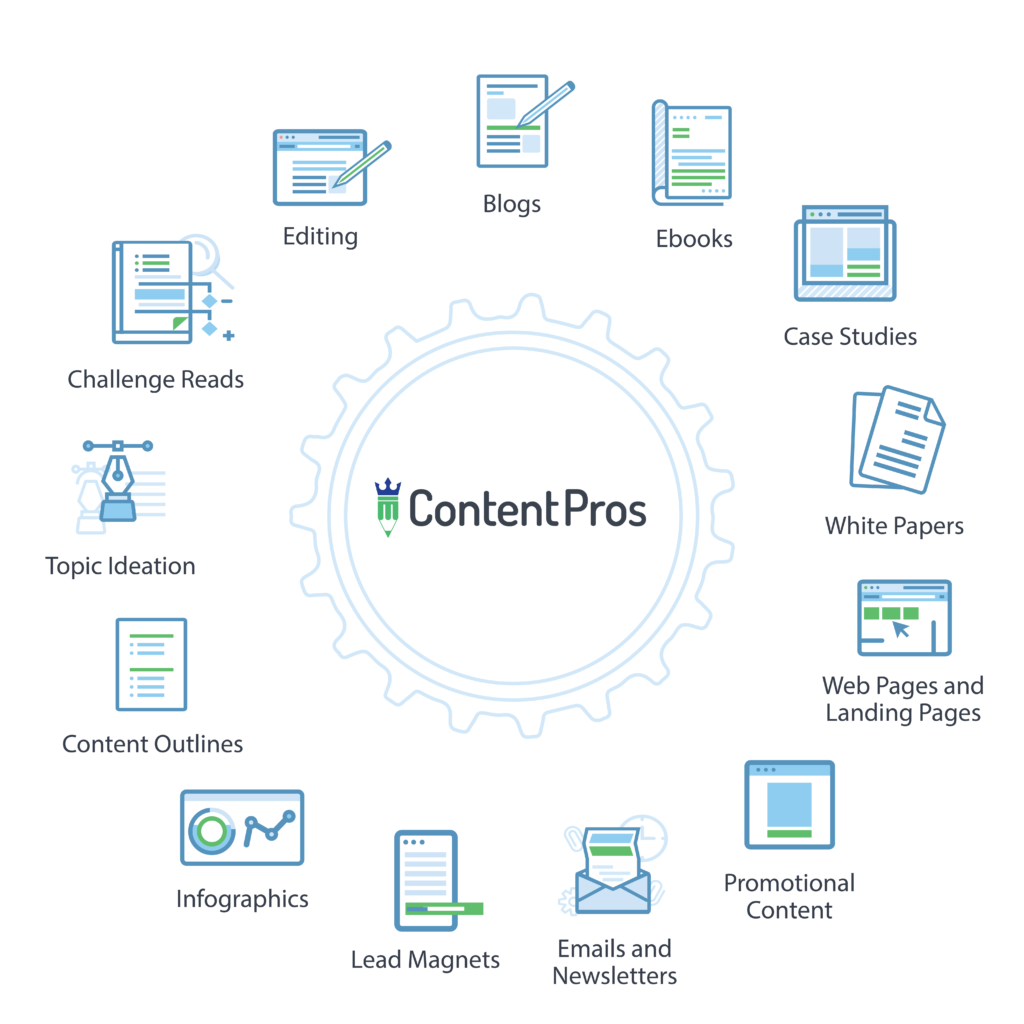Simply writing a blog doesn’t guarantee your audience will see it. About 7 million blog articles are published per day, and that makes for a lot of online competition. You want your content to be seen, right? That’s why we’re sharing our SEO blog article checklist to help you optimize your on-page SEO and rank your articles in search results.
Every high-ranking blog article shares a few common ingredients—let’s explore them in more detail.
1. A Primary Keyword
Most blog articles start with a topic—this is the foundation for the blog article. But beyond the idea, you also need a primary keyword that relates to the topic. THIS is the centerpiece of your blog article.
A primary keyword is the main term or phrase that best describes your blog post. It is the focal point of your SEO blog writing because it represents the term your audience will search for to find your article.
Ideally, your primary keyword will have a high monthly search volume and low competition. You can use free keyword tools to see the volume and difficulty for your chosen terms as well as get other keyword ideas.
Once you choose a keyword, you’ll want to use it strategically in your SEO blog article, including:
- The title
- The meta description
- At least one heading
- In the introduction (ideally the first paragraph)
- In the conclusion
- Throughout the content as it makes sense
- In the URL
Bonus: Placing a keyword in the first sentence of your blog article is SEO gold! You want to set the readers’ expectations up front and give them the answer they came looking for. This practice fosters long-term SEO performance because readers will know immediately why your article will satisfy their search. Therefore, they’re less likely to bounce back to their search results.
It’s also best practice to focus on just one keyword per blog article. You can certainly infuse other related keywords into the content, but your post will be better optimized when you narrow your focus.
2. Secondary Keywords
Speaking of other keywords, your content will benefit from including terms related to your primary keyword. Called secondary keywords or latent semantic indexing (LSI) keywords, these support the primary keyword and provide additional context about your content.
For example, let’s say you’re writing about AI fraud detection, which is your main keyword. Possible secondary keywords might be “how AI detects fraud,” “AI fraud,” or “AI fraud detection software,” for example.
Search engines use secondary keywords to learn more about your content in the right context. Sprinkling common terms throughout your blog post will help search engines rank it appropriately.
3. Meta Title
Your meta title isn’t necessarily the same as your SEO blog article title. This is the title displayed in search results—the title people click on to read your article. A well-crafted title can entice users to click your article.
Meta titles need to be short and to the point. They also need to be actionable and compelling to encourage readers to click. You want your title to stand out in search results, but you also need it to be clear and honest.
Let’s see some examples using the search phrase “LSI keywords:”
In this example, the titles are all very similar. They clearly relate to the search but there’s nothing unique about them. And one title is too long.
Let’s see another example, this time on “blogging basics:”
This time, we see a little more variation in titles, including length and content. While we don’t see much of the exact keyword “blogging basics,” we do see related terms (which is why secondary keywords matter!).
Your meta title should be:
- Actionable
- Specific
- Between 50-60 characters
- Creative when possible
Creativity comes last. You don’t want to sacrifice clarity and action for the sake of being different.
4. Meta Description
Tucked under the meta title on the search engine results page (SERP), the meta description gives a preview of what your SEO blog article is about. You can specify what this text says, or Google will generate a preview for you.
It’s best to write your own meta description because you can give readers a compelling look at what they’ll find when they click your article. Ideally, your description will be 120-155 characters. This length strikes a balance between being descriptive and catchy without getting truncated by Google.
You should also include your primary keyword in this description. The keyword will show up in bold print on the search results page, highlighting exactly what the user is searching for. This can strengthen your click-through rate, and in turn, give your page’s SERP ranking a boost.
5. External Links
External links (or outgoing links) are links in your blog article that go to sources other than your own website. Google looks favorably at blogs with external links (also known as backlinks) because they appear to be well-researched. Links can provide readers with more information or context about a topic, which creates a better user experience.
However, not all links are created equal. Use these best practices when inserting external links:
- Aim for at least 3 external links per blog article
- Only link to high-authority, trustworthy sites
- Don’t link to competitors
- Avoid linking to another article with the same primary keyword as your article
- Use links in the appropriate context
- Use external links to support claims or stats
If your existing blogs aren’t performing well in search, adding external links is an easy and inexpensive way to improve your credibility.
6. Internal Links
Adding internal links to your content gives you easy SEO wins. Internal links help search engines learn more about your content, plus you can keep users on your website for longer by sending them to other resources you own.
Add internal links in a contextual sense without overdoing it. Aim for at least two internal links per blog article. These links can lead to a product/service page, another blog post, or a resource such as an eBook on your website.
7. Optimized Anchor Text
One more point about links—the text you use in your hyperlink matters in SEO blog writing.
This text is called “anchor text,” which is the text a user clicks on to visit the link. Anchor text should contain a relevant keyword to give search engines more context about the destination content you’re linking to.
For example, if you’re linking to a guide on content marketing trends and predictions for the coming year, you might use content marketing trends in 2024 as your anchor text (just like we’ve done).
Avoid generic anchor text, like “click here.” This isn’t compelling, plus it’s a wasted SEO opportunity.
8. Headings and Subheadings
People don’t “read” online content; they skim it. Headings and subheadings (H2s, H3s, etc.) break your blog post into logical sections, making it easier to scan. If a section is running long (250-300 words or so), break it up with a heading.
Using descriptive headings and subheadings keeps readers engaged and prevents them from feeling overwhelmed by large walls of text.
Bonus: Naturally incorporate keywords into your headings and subheadings for an extra SEO boost.
9. Readable Format
Speaking of scannability, the rest of your content should be organized in a way that’s easy to navigate. Instead of long paragraphs, break up your content by using a mix of:
- Bulleted or numbered lists
- Images, videos, or infographics
- Bolded text for emphasis and definitions
- Short sentences
- Short paragraphs (1-3 sentences, tops)
Search engines favor content that is easy to read and understand because it leads to a better user experience.
10. Images and Visual Interest
Dwell time (the amount of time users spend on a webpage) signals that readers are engaging with your content, which can improve your SEO rankings. One way to keep readers engaged is to provide visual interest throughout your blog article.
Visual interest can be many things, including:
- Stock photos
- Graphs
- Tables
- Custom infographics
- Embedded videos
- Embedded social media posts
- CTA boxes
- Tables of contents or centerpiece annotations
Adding visuals makes your content more compelling—and more link-worthy.
11. Alt Text
Alt text refers to the brief descriptive label that can be added to images in web content. This text helps visually impaired individuals understand the content of the image.
For example, here’s the alt text for the image below: A graphic of 13 things you can outsource to a content agency, including blogs, ebooks, case studies, white papers, web pages and landing pages, promotional content, emails and newsletters, lead magnets, infographics, content outlines, topic ideation, challenge reads, and editing.
Alt text also benefits SEO by providing context and relevant keywords for images, which can improve a website’s overall accessibility and visibility. User experience is also a ranking factor, so adding alt text is an easy way to add SEO value.
12. Social Sharing Buttons
Traffic is a big part of SEO, and social media can be an excellent free traffic source. Make it easy for visitors to share your blog article with others by adding one-click social media share buttons.
Search engines don’t care much about the buttons, but they will care about engagement and traffic.
13. Quality Content
Even if you follow all of these SEO blog article best practices, nothing is a substitute for great content. Your blog article should directly relate to the topic and not try to game algorithms by keyword stuffing or repeating what’s already been said about a topic.
Search engines are becoming increasingly sophisticated in their ability to recognize and reward well-written, relevant, and valuable content. By providing readers with high-quality information that is unique, engaging, and informative, blogs can improve their chances of ranking higher on SERPs.
Get the Content Pros’ SEO Blog Article Checklist—Free!
Content Pros follows these SEO blog article best practices in all the content we create for our clients. Reach out today to learn more about our content writing services, and don’t forget to grab your free SEO Blog Article Checklist!





